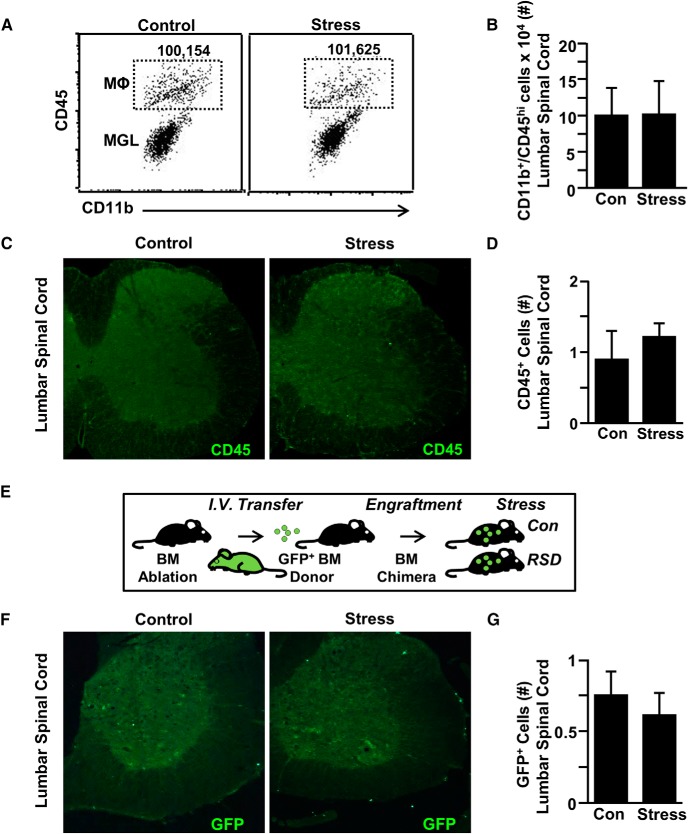Figure 3.
Mechanical allodynia during RSD occurred independent of peripheral monocyte recruitment to the spinal cord. Male C57BL/6 mice were subjected to 6 d of RSD (Stress) or left undisturbed as controls (Con). Fourteen hours after the last day of stress, spinal cords were collected and Percoll gradient-enriched. A, Representative flow bivariate dot plots of CD11b and CD45 labeling of Percoll gradient-enriched cells from the spinal cord. B, Number of CD11b+/CD45hi monocytes/macrophages in the spinal cord. In a separate experiment, mice were perfused, and spinal cords were PFA fixed 14 h after the last day of stress. Presence of monocytes (CD45+) was assessed in the lumbar spinal cord parenchyma. C, Representative images within the lumbar spinal cord parenchyma of CD45 labeling. D, The number of CD45+ cells was quantified in the lumbar spinal cord parenchyma. E, In another experiment, GFP+ BM-chimeric mice were generated. GFP+ BM-chimera mice were generated with BM-derived donor cells that ubiquitously express GFP. In this model, resident (GFP−) and BM-derived cells (GFP+) can be distinguished based on GFP expression. Four weeks after BM reconstitution, GFP+ BM-chimeric mice were exposed to RSD or left undisturbed as controls. F, Mice were perfused, and spinal cords were PFA fixed 14 h after the last day of stress. Presence of peripheral monocytes (GFP+) was assessed in the lumbar spinal cord parenchyma. G, The number of GFP+ cells was quantified in the lumbar spinal cord parenchyma. Error bars indicate mean ± SEM.

